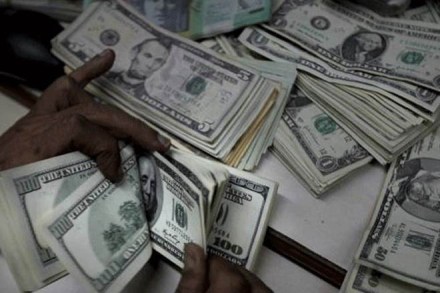A clutch of 23 state-owned banks (PSBs) have clocked a lower aggregate net profit for the three months ended December 2016 than that of Axis Bank. PSBs are slowly limping back to profitability a year after the launch of the Reserve Bank of India (RBI)’s asset quality review which required them to make hefty provisions for impaired assets. At R492.53 crore, combined profits of the lenders was lower than Axis Bank’s R579.57 crore and less than one-twentieth of R9,978.84 crore clocked by a clutch of 16 private-sector banks. In the year-ago period, the same set of public-sector banks had recorded an aggregate net loss of R10,419.25 crore.
Eight banks — IDBI Bank, Central Bank of India, Indian Overseas Bank, Oriental Bank of Commerce, UCO Bank, Bank of Maharashtra, State bank of Travancore and State Bank of Mysore — posted losses in the December quarter. This was an improvement over the Q3 of FY16, which had seen 10 of these banks recording losses. IDBI Bank recorded the largest loss — Rs 2,254.96 crore — among this set, pulled down by provisions worth Rs 3,205.52 crore, which outweighed its net interest income of Rs 850.38 crore.
Bank of Baroda, which had posted a Rs 3,342.04-crore loss in the quarter ended December 2015, saw a net profit of Rs 252.67 crore this year. The improved performance had more to do with a 59.5% year-on-year (y-o-y) jump in other income – comprising core fee income and treasury gains – than with better core operations. Net interest income (NII), the difference between interest earned and interest expended, grew about 16% y-o-y and the bank’s net interest margin (NIM), a key measure of profitability, declined 32 basis points (bps) to 2.49% at the end of December from the end of September.
Mayank Mehta, executive director at the bank, said, “Interest income has come down on account of the interest reversal and we had a one-time loss on the interest receivable that we have not booked. Correspondingly, there was an increase in the interest expenditure on account of demonetisation. We have paid about Rs 70 crore on the incremental savings accounts deposits that have been mobilised because of demonetisation.”
The interest reversal at the bank against accounts that have gone for S4A and SDR stood at Rs 256 crore. The reliance on non-interest income was observed across the board as bond yields fell during the quarter and credit growth remained muted. Punjab National Bank (PNB), while registering a more than 306% jump in its net profit to Rs 207.18 crore, actually saw its NII dropping 9.44% to Rs 3,730.80 crore. Its NIM declined to 2.76% from 2.82% at the end of September.
PNB’s performance on income metrics were nevertheless a positive surprise for analysts. In a note dated February 7, investment bank Jefferies wrote, “Core fee grew 28.2% yoy driven by an improvement in loan processing fee and debiting past service costs. Management indicates their changed model of not providing any discounts on loan sanctions has resulted in better loan processing fee and trends will sustain.” Jefferies has maintained ‘hold’ rating on the PNB stock as it watches the bank’s asset quality performance.
